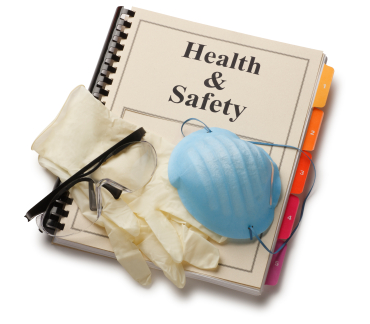Crafting Efficient Processes: The Art of Procedure Development
In the world of business, the key to success often lies in the intricate design of efficient processes. Like a skilled artisan meticulously crafting a masterpiece, procedure development requires creativity, precision, and careful attention to detail. In this article, we will delve into the art of crafting efficient processes and explore how businesses can streamline their operations to achieve optimal results. Join us on a journey of innovation and transformation as we uncover the secrets to creating procedures that are not just effective, but truly masterful.
Understanding the Importance of Procedure Development
Developing efficient processes is crucial for the success of any organization. By crafting well-defined procedures, businesses can streamline their operations, reduce errors, and improve overall productivity. It is essential to understand the importance of procedure development in order to achieve these goals.
Effective procedures not only ensure consistency in work processes but also help in creating a standard framework for tasks. They provide employees with clear guidelines on how to perform their duties, which can lead to better decision-making and increased efficiency. Moreover, well-developed procedures help in identifying areas for improvement and can contribute to the overall growth and success of the organization.
Key Elements for Building Effective Processes
When it comes to crafting efficient processes, there are several key elements that must be considered in order to develop effective procedures. One of the most crucial factors is clear communication. It is essential for all team members to be on the same page regarding the goals, steps, and expectations of a process. This can be achieved through the use of clear and concise documentation, regular team meetings, and open lines of communication.
Another important element is flexibility. Processes should be designed in a way that allows for adaptability and scalability as the needs of the organization evolve. By building in room for adjustments and improvements, processes can remain relevant and effective in the long term. Additionally, it is important to regularly review and assess processes to identify areas for optimization and enhancement.
Implementing Best Practices for Streamlining Procedures
Developing efficient processes is essential for any organization looking to improve productivity and save valuable time and resources. By implementing best practices for streamlining procedures, businesses can ensure that tasks are completed more effectively and with fewer errors. One key aspect of crafting efficient processes is the art of procedure development, which involves defining clear steps, identifying potential bottlenecks, and continuously optimizing workflows for maximum efficiency.
When designing procedures, it is important to consider the specific needs and goals of the organization. By customizing processes to align with the unique requirements of the business, teams can work more cohesively towards achieving common objectives. Additionally, leveraging technology and automation tools can further streamline procedures and help eliminate manual errors. By embracing a proactive approach to procedure development, organizations can create a culture of continuous improvement and drive sustainable success in the long run.
Continuous Improvement: Fine-tuning Processes for Efficiency
Efficiency in processes is like a well-crafted masterpiece, requiring careful thought, precision, and continuous refinement. As organizations strive for excellence, the art of procedure development becomes a crucial element in achieving optimal performance. By fine-tuning processes through analysis, feedback, and innovation, businesses can streamline operations, reduce waste, and enhance overall productivity.
When crafting efficient processes, it’s essential to approach procedure development with a strategic mindset. Embracing a culture of continuous improvement allows for ongoing adjustments and enhancements to workflows. By leveraging data-driven insights, implementing best practices, and fostering collaboration among team members, organizations can create a roadmap towards operational excellence. The journey towards efficiency is a dynamic process that requires dedication, creativity, and a commitment to refining processes for sustainable success.
Final Thoughts…
Mastering the art of procedure development is key to crafting efficient and effective processes in any organization. By taking the time to carefully design and implement procedures that are clear, concise, and easy to follow, businesses can streamline their operations, reduce errors, and improve overall productivity. So, whether you’re a small startup or a large corporation, remember that the devil is in the details when it comes to process efficiency. Embrace the challenge, hone your skills, and watch as your organization flourishes with well-crafted procedures at its core. Happy crafting!


 StrategyDriven Enterprises, LLC
StrategyDriven Enterprises, LLC The complexity of modern organizations necessitates a collage of policies, processes, and procedures to guide their operations. Some procedures guide the actions of personnel within a single workgroup while others govern interactions and handoffs between workgroups.
The complexity of modern organizations necessitates a collage of policies, processes, and procedures to guide their operations. Some procedures guide the actions of personnel within a single workgroup while others govern interactions and handoffs between workgroups.
 Maintaining compliance with regulatory requirements, industry guidelines, and organizational commitments is the responsibility of every employee. Compliance typically occurs on a day-to-day basis through the performance of common policies, processes, and procedures. Subsequently, most organizations embed the actions necessary to achieve compliance within their instructional manuals. Ensuring these actions are both followed and remain in place over time is key to a successful compliance program.
Maintaining compliance with regulatory requirements, industry guidelines, and organizational commitments is the responsibility of every employee. Compliance typically occurs on a day-to-day basis through the performance of common policies, processes, and procedures. Subsequently, most organizations embed the actions necessary to achieve compliance within their instructional manuals. Ensuring these actions are both followed and remain in place over time is key to a successful compliance program.